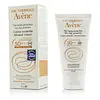What's inside
What's inside
 Key Ingredients
Key Ingredients

 Benefits
Benefits

 Concerns
Concerns

 Ingredients Side-by-side
Ingredients Side-by-side

Water
Skin ConditioningTitanium Dioxide
Cosmetic ColorantIsodecyl Neopentanoate
EmollientTriethylhexanoin
MaskingC12-15 Alkyl Benzoate
AntimicrobialGlycerin
HumectantCyclopentasiloxane
EmollientPolyglyceryl-4 Isostearate
EmulsifyingAlumina
AbrasiveCetyl PEG/PPG-10/1 Dimethicone
EmulsifyingHexyl Laurate
EmollientC30-45 Alkyl Methicone
EmollientStearic Acid
CleansingC30-45 Olefin
Skin ConditioningCyclohexasiloxane
EmollientCaprylic/Capric Triglyceride
MaskingCaprylyl Glycol
EmollientDisodium EDTA
CI 77492
Cosmetic ColorantOctyldodecanol
EmollientPentaerythrityl Tetra-Di-T-Butyl Hydroxyhydrocinnamate
AntioxidantSilica Dimethyl Silylate
EmollientSilk Amino Acids
HumectantSodium Chloride
MaskingSorbic Acid
PreservativeTalc
AbrasiveCI 77891
Cosmetic ColorantTocopheryl Glucoside
EmollientXanthan Gum
EmulsifyingWater, Titanium Dioxide, Isodecyl Neopentanoate, Triethylhexanoin, C12-15 Alkyl Benzoate, Glycerin, Cyclopentasiloxane, Polyglyceryl-4 Isostearate, Alumina, Cetyl PEG/PPG-10/1 Dimethicone, Hexyl Laurate, C30-45 Alkyl Methicone, Stearic Acid, C30-45 Olefin, Cyclohexasiloxane, Caprylic/Capric Triglyceride, Caprylyl Glycol, Disodium EDTA, CI 77492, Octyldodecanol, Pentaerythrityl Tetra-Di-T-Butyl Hydroxyhydrocinnamate, Silica Dimethyl Silylate, Silk Amino Acids, Sodium Chloride, Sorbic Acid, Talc, CI 77891, Tocopheryl Glucoside, Xanthan Gum
Water
Skin ConditioningDicaprylyl Carbonate
EmollientDiethylamino Hydroxybenzoyl Hexyl Benzoate
UV FilterSilica
AbrasiveIsopropyl Lauroyl Sarcosinate
Skin ConditioningPropanediol
SolventBis-Ethylhexyloxyphenol Methoxyphenyl Triazine
Skin ConditioningCoco-Caprylate/Caprate
EmollientBeheneth-25
CleansingEthylhexyl Triazone
UV AbsorberAcrylates/C12-22 Alkyl Methacrylate Copolymer
Glyceryl Stearate Citrate
EmollientDiethylhexyl Butamido Triazone
UV AbsorberNiacinamide
SmoothingAlkanna Tinctoria Root Extract
Skin ConditioningArginine
MaskingCucumis Melo Fruit Extract
Skin ConditioningDisodium Lauryl Sulfosuccinate
CleansingHydroxypropyltrimonium Maltodextrin Crosspolymer
Lecithin
EmollientLepidium Sativum Sprout Extract
Skin ConditioningMaltodextrin
AbsorbentSodium Acetylated Hyaluronate
HumectantGlycerin
HumectantHelianthus Annuus Seed Oil
EmollientTocopherol
Antioxidant1,2-Hexanediol
Skin ConditioningCaprylyl Glycol
EmollientCitric Acid
BufferingHydroxyethyl Acrylate/Sodium Acryloyldimethyl Taurate Copolymer
Emulsion StabilisingPentylene Glycol
Skin ConditioningPolysorbate 60
EmulsifyingSorbitan Isostearate
EmulsifyingXanthan Gum
EmulsifyingCoco-Glucoside
CleansingWater, Dicaprylyl Carbonate, Diethylamino Hydroxybenzoyl Hexyl Benzoate, Silica, Isopropyl Lauroyl Sarcosinate, Propanediol, Bis-Ethylhexyloxyphenol Methoxyphenyl Triazine, Coco-Caprylate/Caprate, Beheneth-25, Ethylhexyl Triazone, Acrylates/C12-22 Alkyl Methacrylate Copolymer, Glyceryl Stearate Citrate, Diethylhexyl Butamido Triazone, Niacinamide, Alkanna Tinctoria Root Extract, Arginine, Cucumis Melo Fruit Extract, Disodium Lauryl Sulfosuccinate, Hydroxypropyltrimonium Maltodextrin Crosspolymer, Lecithin, Lepidium Sativum Sprout Extract, Maltodextrin, Sodium Acetylated Hyaluronate, Glycerin, Helianthus Annuus Seed Oil, Tocopherol, 1,2-Hexanediol, Caprylyl Glycol, Citric Acid, Hydroxyethyl Acrylate/Sodium Acryloyldimethyl Taurate Copolymer, Pentylene Glycol, Polysorbate 60, Sorbitan Isostearate, Xanthan Gum, Coco-Glucoside
Ingredients Explained
These ingredients are found in both products.
Ingredients higher up in an ingredient list are typically present in a larger amount.
Caprylyl Glycol is a humectant and emollient, meaning it attracts and preserves moisture.
It is a common ingredient in many products, especially those designed to hydrate skin. The primary benefits are retaining moisture, skin softening, and promoting a healthy skin barrier.
Though Caprylyl Glycol is an alcohol derived from fatty acids, it is not the kind that can dry out skin.
This ingredient is also used as a preservative to extend the life of products. It has slight antimicrobial properties.
Learn more about Caprylyl GlycolGlycerin is already naturally found in your skin. It helps moisturize and protect your skin.
A study from 2016 found glycerin to be more effective as a humectant than AHAs and hyaluronic acid.
As a humectant, it helps the skin stay hydrated by pulling moisture to your skin. The low molecular weight of glycerin allows it to pull moisture into the deeper layers of your skin.
Hydrated skin improves your skin barrier; Your skin barrier helps protect against irritants and bacteria.
Glycerin has also been found to have antimicrobial and antiviral properties. Due to these properties, glycerin is often used in wound and burn treatments.
In cosmetics, glycerin is usually derived from plants such as soybean or palm. However, it can also be sourced from animals, such as tallow or animal fat.
This ingredient is organic, colorless, odorless, and non-toxic.
Glycerin is the name for this ingredient in American English. British English uses Glycerol/Glycerine.
Learn more about GlycerinWater. It's the most common cosmetic ingredient of all. You'll usually see it at the top of ingredient lists, meaning that it makes up the largest part of the product.
So why is it so popular? Water most often acts as a solvent - this means that it helps dissolve other ingredients into the formulation.
You'll also recognize water as that liquid we all need to stay alive. If you see this, drink a glass of water. Stay hydrated!
Learn more about WaterXanthan gum is used as a stabilizer and thickener within cosmetic products. It helps give products a sticky, thick feeling - preventing them from being too runny.
On the technical side of things, xanthan gum is a polysaccharide - a combination consisting of multiple sugar molecules bonded together.
Xanthan gum is a pretty common and great ingredient. It is a natural, non-toxic, non-irritating ingredient that is also commonly used in food products.
Learn more about Xanthan Gum